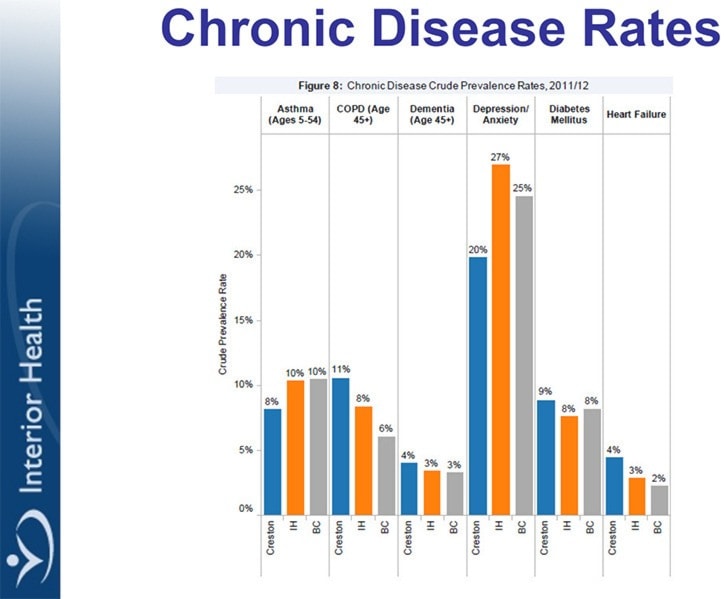Two Interior Health Authority (IHA) delegations visited Tuesday's regular town council meeting, the first an update by Fernie and Creston acute services director Shirley Mercier and community health services administrator Terri Domin.
Mercier said the IHA has a $1.9 billion budget and 19,170 staff to serve 742,000 residents. With an average age of 79 in Creston — a number Coun. Jen Comer took exception to, saying it should be far lower (only 11 per cent of residents are 80 or over, with a median age of about 55, according to Statistics Canada) — she said typical ailments include asthma, chronic obstructive pulmonary disease (COPD) and diabetes.
Adult males in Creston have the lowest immunization rates, and an IHA team recently visited Home Hardware Building Centre, the Columbia Brewery and the Creston and District Community Complex, immunizing 60 for tetanus and diphtheria. Adults who are interested in updating their vaccinations should make an appointment with a public health nurse.
Mercier and Domin also expressed appreciation for community partners, including the Creston-Kootenay Foundation, the Elks and Shrine clubs, the Tuck Shop and the Creston Valley Hospice Society for donations that help the Creston Valley Hospital upgrade equipment.
Following that presentation, community health facilitator Kerri Wall took over, discussing the Healthy Communities Initiative, though which the IHA wants “support and augment local government work in the area of health policy and planning.”
Often, she said, a lot of things that keep people healthy pall outside the scope of the Ministry of Health, including income, nutritious food, exercise, stress and education.
“People who struggle with these require the most health services,” said Wall.
She appreciated local efforts to find out what the population needs in those areas, with research being gathered in Cultivating Creston, the Age Friendly Action Plan and the Youth Engagement Strategy.
“There is a long history of cities and public health working well together,” she said, citing water and sewage systems, which are “excellent examples of public policy and public planning.”
Wall reminded council she visited last May to discuss smoke-free spaces, and has been involved in the region with regard to recreation, agricultural and social planning, and priority population policies. She has also helped with poverty reduction planning in Cranbrook and Nelson; B.C. is the only province without a poverty reduction strategy.
She suggested that council consider a motion to partner with the IHA “to promote health and wellness in the community and reduce the risk factors from chronic disease.” Informal agreements hav already been struck with Kimberley, Cranbrook, Fernie, Sparwood, Elkford, Nelson, Fruitvale, Kaslo and Grand Forks, with agreements developing in Golden and Castlegar.
“Let’s put some intention into our relationship,” she said.
Council referred the motion to staff for review.
